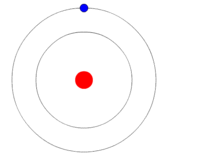 This book is the edited transcription of a lecture series given by renowned physicist, Richard P. Feynman, at UCLA in 1983. These lectures were designed for an audience of intelligent individuals who are interested in physics but only the good stuff, not the dirty work of slogging through all the math. That said, unless you are a physicist, masochist or perhaps need something to put you to sleep at night this book is not for you.
This book is the edited transcription of a lecture series given by renowned physicist, Richard P. Feynman, at UCLA in 1983. These lectures were designed for an audience of intelligent individuals who are interested in physics but only the good stuff, not the dirty work of slogging through all the math. That said, unless you are a physicist, masochist or perhaps need something to put you to sleep at night this book is not for you.
Feynman in my opinion is one of the greatest physicists of all times, mostly because of his ability to explain just about anything at a level lay people, or at least those like myself with a lowly bachelor’s degree in physics, could understand. When I was in college pursuing such I relied heavily on my three volume set of “Feynman’s Lectures on Physics” to help me understand certain theories where my college texts failed to explain them sufficiently. Thus, when I obtained this book I expected it to provide a better understanding of quantum electrodynamics than I had previously, which of course was essentially null so it could only increase. That did, indeed, happen, but not to the level I’d hoped for.
Feynman warns his readers right up front in the Introduction on page 9 when he says, “It is my task to convince you not to turn away because you don’t understand it. You see, my physics students don’t understand it either. That is because I don’t understand it. Nobody does.”

QED is way beyond this diagram of a photon increasing the quantum level of an electron or reducing it when released.
Great. It was considerate to point out right up front that I would feel either lost or stupid throughout, which certainly proved to be the case. For me even the various diagrams he uses to explain these phenomena (which ultimately became known as Feynman diagrams) were more confusing than not. He did note that it took his graduate student three years to grasp them which was somewhat comforting. Nonetheless, toward the end they reminded me more of Abbott and Costello’s famous skit we know as “Who’s on first?” than the interaction of fundamental particles. However, Feynman’s humor and witty style kept me reading for such jewels as “I have delighted in showing you that the price of gaining such an accurate theory has been the erosion of our common sense.”
Nonetheless, as I lay this book to rest on my shelf I will admit that it does contain numerous dog-eared pages and lots of highlighting. I’m fascinated by the fact that some particles at the quantum level go backward in time. I mean, seriously, how cool is that? I now understand that QED is about the mysterious interaction between photons and electrons, which of course makes sense with a title of “quantum electrodynamics.” Duh. I now also understand more fully what a Feynman diagram comprises. Thus, even though he was correct in assuming that I wouldn’t understand it, I do know more than I did when I started reading so the experience was not a total loss.
One thing to bear in mind if you should decide to take on this book is that since 1983 when these lectures were delivered (and just happens to be the year I started college) much more has been discovered in the field of particle physics. This is explained beautifully by the proofreading notes at the end of this book, the first dated November 1984 which states, “Since these lectures were given, suspicious events observed in experiments made it appear possible that some other particle or phenomenon, new and unexpected (and therefore not mentioned in these lectures), may soon be discovered.” The second proofreading note dated April 1985 stated, “At this moment the “suspicious events” mentioned above appear to be a false alarm. The situation no doubt will have changed again by the time you read this book. Things change faster in physics than in the book publishing business.”
Probably the biggest news in this field to come in the past few years was the discovery of the “God particle” or Higgs boson. This book certainly prepares you for the existence of new particles and provides some understanding of what is involved in that process and why it’s not an easy matter. It you really want to get into this stuff this book is a good primer.
In conclusion, it’s worth noting that “Q.E.D.” is a term also used in mathematics at the end of a proof as an abbreviation for the Latin saying “quod erat demonstrandum,” i.e., “which was to be demonstrated.” If nothing else, Feynman truly demonstrated that this stuff really is beyond human understanding even for those who can do the math. In other words, they may be able to determine what is going on but certainly not the why, which lies in another realm. Thus, it is my sincerest hope that since this great man now resides in that very place that he can at last fully understand it. I sure don’t.
You can pick up your copy if you’re so inclined at the link below.
QED: The Strange Theory of Light and Matter (Princeton Science Library)
